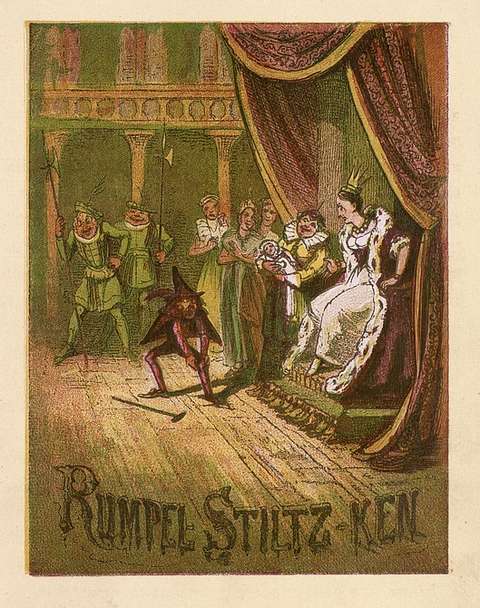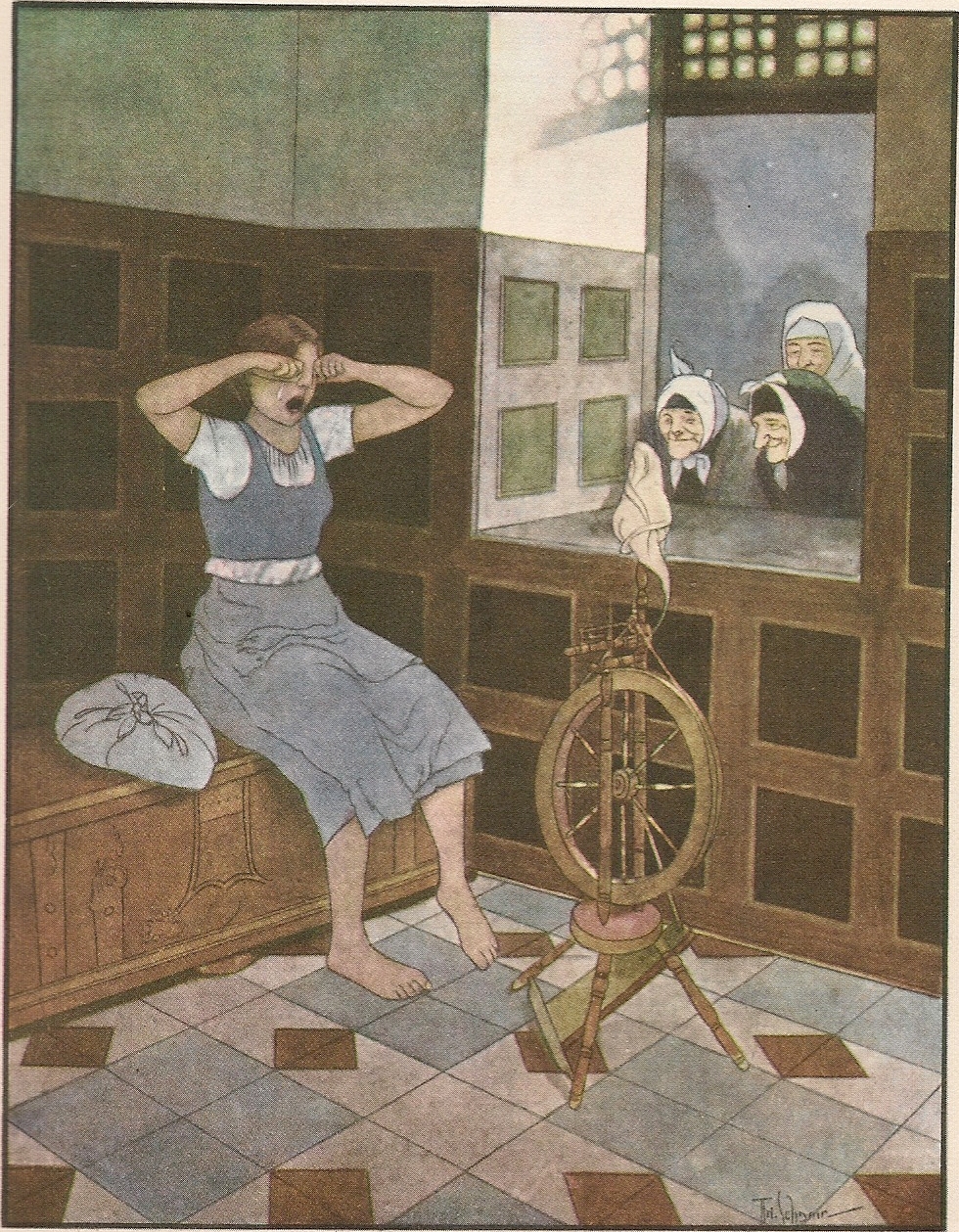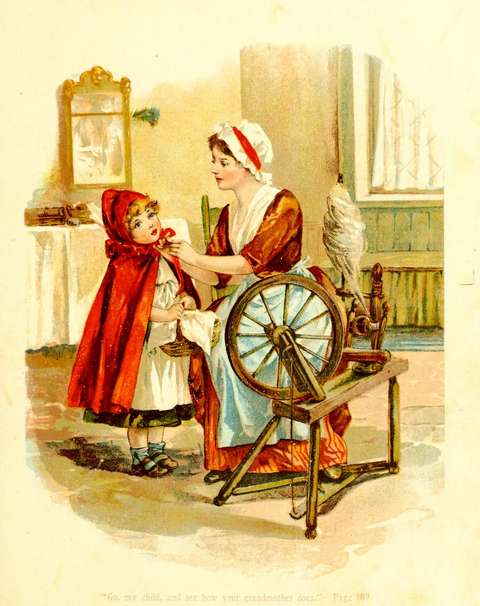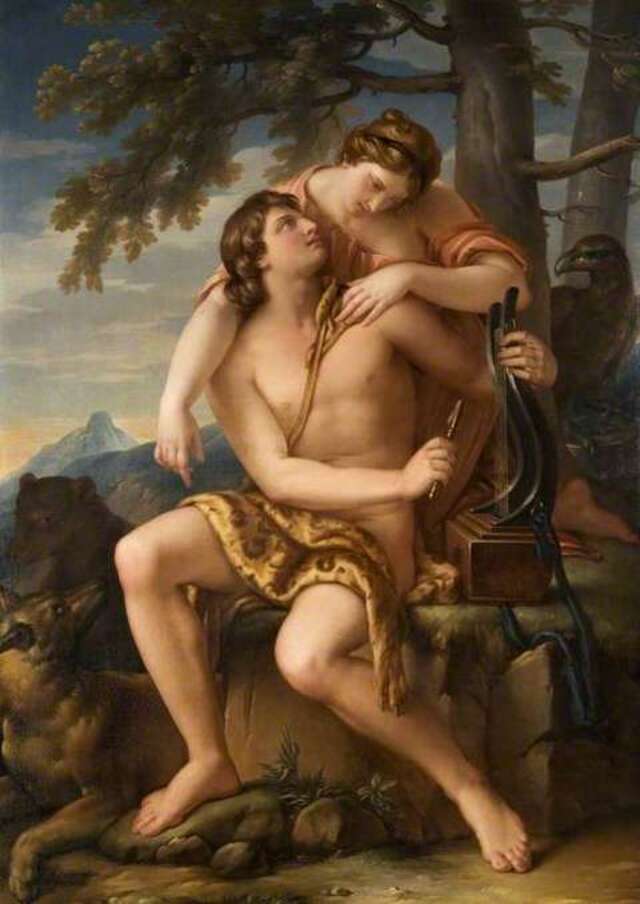-
Cornucopia - The Symbol of Abundance
Cornucopia is Latin for Horn of Plenty. Today, we are familiar with horn-shaped wicker baskets used for Thanksgiving as a symbol of abundance. For many centuries, cornucopia was a real horn. Sometimes, it was used for drinking and sometimes in rituals, mostly connected with the end of the harvest season.
Cornucopia is made of two Latin words: cornu (horn) and copia (a lot of, plenty). The term can be traced to Greek mythology, but it was called Keras Amaltheias at first. Again, two words: keras for 'horn' and Amaltheias for 'from Amalthea.' Who was Amalthea? Here, opinions differ:
- Amalthea was a nymph in charge of baby Zeus, who was hidden from his father Kronos (Cronus). She had a goat, which gave milk to Zeus.
- Amalthea was a goat who was giving milk to Zeus.
- Amalthea was a nymph who was able to shapeshift. When she was in the form of a goat, she was giving milk to Zeus.
In all cases, we are dealing with a goat, goat's milk, and a hungry baby god in Crete. Zeus was a lively baby, and on one occasion, a horn was broken from a goat's head. (We have at least two versions - either Zeus broke it, or Amalthea broke it.) From then on, the horn provided milk and other food for Zeus. His divine powers made the horn always full, so there was always enough food for him.
(Neptune offering gifts to the city of Venice by Giovanni Battista Tiepolo)
The idea of such a horn of abundance spread all over the known world. We can find similar horns among Nordic tribes. They are popular among people from South Europe. Horns still play a part in old Slavic rituals.
(Svetovit by Aylett Sammes)
Cornucopia became associated with numerous gods in different mythologies. Apart from Zeus, we can find it at Pluto (Hades), Demeter, Chloris, Gaia, and Fortuna. Old harvest festivals often used a cornucopia as a centerpiece of celebrations. The harvest was over, and the winter was coming. Plenty of food should be stored for the harsh months. Cornucopia, filled with fruits, vegetables, and herbs, was a visual proof of abundance. With a cornucopia on the table, there was no need to worry.
There is also a non-mythological explanation of why a horn represents abundance. Wild goats living on Crete start mating at the end of the hot and dry season. The arrival of the rain in the Autumn is a necessary condition for survival. People living there noticed that the mating season of the wild goats, accompanied by spectacular fights among horned males, coincided with the beginning of the rainy season. Horns bring thunder (Zeus is a god of thunder), and thunder means rain. Rain, of course, is necessary for growth, and a lot of rain means abundance. Milk for Zeus and water for people!
(Spring in Seville by Jose Jimenez Aranda)
Numerous festivals all over the world still use cornucopia as one of the elements for celebrations. Now you know why.
 votre commentaire
votre commentaire
-
A harp is one of the oldest instruments originally made of a bow and with old drawings suggesting at least 15 thousand years of history. The harp's music is enchanting and emotional. In fact, old harpists were expected to master transferring three emotions to their listeners by playing this ancient instrument: happiness, relaxation, and sadness.
The harp has rich and versatile symbolism which pretty much varies depending on context. Sometimes it's interchangeable with the lyre. The harp is played by hands, a symbol of creativity. During play, the matter (harp's strings) is transformed into vibrations that are essential for life.
According to Greek mythology, Apollo heard Artemis while she was hunting. He was so enchanted by the sound of her bow, that he gave her additional strings to attach to her weapon thus creating a completely new instrument.
Some mythologies claim that the harp is played by the messenger of death. Everybody who hears it will die soon. This means that the harp connects the worlds of living and dead beings. It can be also understood as the bridge between heaven and earth with the man somewhere in between.
Harp's music is closely associated with heaven. Angels are often portrayed while playing harps. Harp's shape evolved from a half circle (the bow) to a rectangular triangle. The proportions of the sides are 3, 4, and 5 (famous Pitagora's equation a(sq) + b(sq) = c(sq) is magical on its own) so let's take a look just at the symbolic meanings of numbers.
Three represents the Divine (Trinity). Four stands for Earth (sides of the world). Five means Destiny. This means that the man from Earth with the blessing of divine beings creates his fate.
The harp is a well-known symbol of Ireland. At the beginning of the 12th century, Normans invaded Ireland. When Prince John and Gerald of Wales arrived in Ireland Gerald De Barri described Irish people as barbarous. Yet he added one positive remark. He was enchanted with their skillful playing of harps. He praised the Irish harpists so much since then everybody associated Ireland with this instrument. When the status of Ireland was upgraded from lordship to a kingdom in 1541 first Irish coins were made. A harp with a crown floating on the top became a symbol minted on the coin.
Image of the harp is still widely used on greeting cards sent on St. Patrick's Day.
Today we associate the harp and its delicate sound with beauty and wisdom. It has a strong influence on the body and emotions. We can see it as a tool and as a weapon.
 votre commentaire
votre commentaire
-
What Does an Egg Symbolize?
Eggs have had strong symbolic power all over the world since the beginning of history. Practically all Pagan cultures saw eggs as the symbol of hope and new life. Many believed that eggs represented the magical potential of inanimate nature to transform into something alive. Eggs of birds and lizards were living proof.

The look of an egg already suggests we are dealing with something special. Its oval shape represents the eternity. It has no beginning and no end. Or, if we look a bit differently, it represents the endless cycles in nature.
Eggs come in different sizes and colors but always have surroundings made of fragile shells. Inside the shell, there's the mystery of life as so many cultures noticed and acted accordingly. Several religions put the egg in the central role of the creation of the world.

Concert in the Egg by Gielis Panhedel (ca 1490-ca 1550)
According to Egyptian creation myth, the bird of light came from the cosmic egg effectively creating the world as we know it. Old Greeks saw divinity in eggs as well. One such example is the story about Leda and Zeus who visited her in the form of a swan which resulted in Leda's laying two eggs (!), one being fertilized by the god and the other by her husband. Four children hatched from these eggs although there are different theories about which kid came from which egg. Nevertheless, Ledo's children made a great impact. They were two pairs of twins: Castor and Pollux and Helen (of Troy) and Clytemnestra.

Leda and the Swan by Andrea del Sarto (1486-1531)
The egg's white shell symbolizes innocence and purity in a similar way as the white wedding dress or the Pope's white cassock. The yolk with its olden color is closely associated with the Sun, the ultimate source of life. An egg can be easily broken but life can also come out of it which associates it with death and life at the same time. Or, we can see it as the purity which can be easily broken, so the innocence is lost when the shell is broken.
Such dualism was perfect for the incorporation of Pagan relations with eggs into Christianity. Several religions, including Roman and German, used eggs in different fertility-related rituals, especially the ones happening in spring when according to the very same religions the year started. Eggs were traditional gifts for centuries way before the birth of Jesus. Old Greeks and Romans colored and hung them as decoration every spring. They were always perceived as something extremely positive. It seemed logical to continue this tradition when Christianity became the dominant religion.

Vintage Easter Card by Jenny Nystrom (1854-1946)
While eggs are symbolically intertwined with female fertility (only females lay eggs), in the East tradition of yin and yang the eggs are classified as yang which is masculine, a dominant part of the balance.
The Chinese also gave colored eggs to each other at least five thousand years ago. They painted it red as well while this custom started among Christians in most of Europe only in the 13th century. The explanation that an egg represents Christ's tomb or dyed eggs represent his blood came later and differs from area to area.

Alchemists believed that eggs represent a microcosmos containing all four elements in a perfect balance. Some of them believed eggs were the necessary ingredient for the recreation of the philosopher's stone, the substance capable of turning common metals into silver and gold. The golden color of the yolk only supported that theory. Such belief occasionally caused huge shortages of eggs in certain areas which led to temporarily astronomical prices.
Today the role of the egg as the present is widespread all over the globe although chocolate eggs slowly but steadily substitute the eggs laid by hens. There are also numerous other sweets in the shape of colorful eggs given to children at Easter time which became the second-best holiday by sales of the sweets (after Halloween).

On the other hand, eggs inspired some of the most impressive jewelry of all time. We are talking about Faberge eggs, created by the House of Faberge for Russian emperors. There were supposed to be about 69 Faberge eggs altogether but only 57 survived until today. Each of the Faberge eggs is worth several million dollars with so-called The Rothschild Clock Egg as the record holder being sold for 25,1 million dollars.
 votre commentaire
votre commentaire
-
Spindles and spinning wheels possess great symbolic power and are frequently used in myths, stories, and fairy tales. They are often part of our dreams and they can represent many different things depending on cultural, historical, and personal context. Let's explore the symbolism behind spindles and spinning wheels with a few simple examples.
Sleeping Beauty
The most famous spindle and spinning wheel are very likely the ones from Sleeping Beauty. At the beginning of this classic fairy tale, a prophecy is given: when the princess turns fifteen (this age may vary a bit depending on the version), she will prick her finger with a spindle and die.

Each of the elements in this prophecy/curse given by the old fairy and realized with the help of an old woman can be easily interpreted with a very classic analysis.
Spindle is obviously a tool of change. With its characteristic shape, being long, strong, hard with pointed at one and thicked at the other side, it is a clear phallic symbol. It is being used by the hands of women. Not men, not girls, but women. When a girl takes a spindle in her hand, she symbolically turns from a girl into a woman. Her childhood is over. In some way, we could say, that her childhood is dead. Her adulthood is in front of her.
Pricking a finger is not coincidental either. Fingers are in virtually all cases our first instruments when we explore our sexuality. Blood, of course, represents loss of virginity and it means death (of childhood) and birth (of adulthood) at the same time.
Old woman/women as a medium of this important, if not fatal event is not in the picture by coincidence. Fairy tales often incorporate older women who pass some kind of knowledge and experience to youngsters, especially girls who are about to become women. Spinning, as an activity traditionally associated with women, with the spinning wheel, traditionally associated with changes, creativity, and life cycles, is a perfect opportunity for such a transfer.
Sleep as an important part of the prophecy represents waiting. Spinning is a creative process where patience is crucial. It takes time to transform a thread into a textile, it takes time to become a woman from a girl. It takes years and can be perceived as 'one hundred years' before you grow up - in the case of Sleeping Beauty, before you find (or be found) by 'Mr. Right'.
Rumpelstiltskin
Rumpelstiltskin is another example of spinning. A strange-looking (can we just say - ugly?), small but obviously powerful man, represents a male reproductive organ. Miller's daughter is afraid of him but is even more afraid of her seemingly impossible task. She must spin straw into gold.

She is clearly incapable of this extremely creative process. All men in her life (her father and the king) expect that from her but she can't do it alone. She needs help from a magical being and Rumpelstiltskin enters as a confident (and confidential) bearer of the necessary creative, even magical, life-bringing power.
While he saves her life (literary in the story and symbolically as a man who transforms the girl into a woman), he creates a new one (literally by making gold and symbolically by demanding her first child). After all, he spent three nights in a row with a girl who was never with a man alone, not alone in the dark.
The life threat coming from the king seems a bit too much if we are looking at the story only. On the other hand, he is looking for an heir and for that, he needs a wife. If she can't give him a son, his legacy will die. King will symbolically die. so she should die too!

One more thing - Rumpelstilzchen (original title in Grimm's fairy tales) is a slang word in the German language for a construction pole and in certain circles, it's used as a vulgar depiction of the male reproductive organ. When she (literary) learns Rumpelstiltskin's name she (figuratively) proves she is able to handle men (sexually and reproductively).
Three Spinners
Three Spinners (or Three Spinning Women) is a less-known fairy tale from the same collection. It's actually a variant of Rumpelstiltskin with strong association with three fates (Clotho as Spinner), Lachesis as Allotter, and Atropos as Inflexible) who control human fate. The first is spinning, the second is dispensing, and the last is cutting, which determines the beginning, shape, and end of life for each individual. By the way, three is a divine number, a number of perfection.

The spinning wheel represents domesticity, feminity, and productivity - everything society expects from women but not from girls.
Spinning is always strongly connected with women who are capable of bearing new life, which gives them the ultimate magical power. Such a look at spinning is present all over the world. In Hinduism, for instance, it symbolizes karma with life, death, and rebirth.
For the end of this simplified explanation of the symbolism behind the spindle and spinning wheel, we can look at one more picture from a famous fairy tale. It's painted by Richard Andre who decided to portray the well-known scene from Little Red Riding Hood differently than hundreds of other artists who decided to present the taking goodbye outside of the house.

He puts the scene inside and Little Red Riding Hood's mother behind the spinning wheel. Why? To emphasize the safety of the girl's home she is about to leave? To justify mom's decision to send the girl into dangerous woods alone by having important work to do? Or maybe to predict a new life for both characters in the picture - the girl will become a woman (in French the phrase 'to meet a wolf' actually means 'to lose virginity'), and her mother can focus on making clothes for a new child.
 votre commentaire
votre commentaire
-
Frog is a popular symbol in virtually all cultures of the world, yet its symbolism is not always the same. Most Asian and Latin American countries, for instance, see frogs as bearers of good luck while the Western world sees them as the second of Biblical plagues.
Why is frog symbolism so complex?
Frogs as species are much older than people. They were here before the dinosaurs and despite the fact many frog species became endangered they still have a good chance to outlive us. The main reason for that is their adaptability. As amphibians, they can live in and out of the water with species being able to survive the deadliest deserts or being frozen for many years until the weather changes and they can live on as if nothing happened.
This means frogs are widely seen as a symbol of change.
Is this change for better or worse? Well, this is where the complexity really begins. It can be both because change can always bring good and bad things. The unpleasant look of frogs and their annoying voice definitely doesn't encourage positive thoughts. On the other hand, frogs are mostly found near water which is essential for survival. So seeing a frog after a long journey through the dangers of the woods was obviously good news.
In Japan, for instance, a frog is considered as a protector of the travelers.
Frogs also symbolize transformation. In general, a frog lives in five stages. Each one of them significantly differs from all others. If you are not familiar with them you could easily believe you see completely unrelated animal species.
Marianne Stokes packed her view on The Frog Prince with symbolic meanings.
A nice example of symbolical transformation associated with frogs is one of the most popular classic fairy tales - The Frog Prince. While in this story the princess never kissed the frog, a popular saying claims: you have to kiss a lot of frogs to find your prince.
This saying could be seen from the transformation point of view but it can be understood differently as well. A frog, at first, is far from being attractive. Many people find them even repulsive, disgusting. But when you know them better, you can see their more attractive attributes too. After all, thousands and thousands of people every day choose frogs as pets.
So if you can persist in our search long enough, one day you'll find even a frog attractive. If this is true, everybody can become attractive or at least bearable as a potential partner in private or business life.
One frog can lay several tens of thousands of eggs per season which automatically makes it a symbol of fertility. In some parts of the world, where land is covered with ice for at least a few months per year, frogs hibernate in cold times and suddenly appear 'from nothing' when the land is defrosted. This associates frogs with spring, new life, and rebirth.
Erotic allusions in Ludwig Richter's illustration above are obvious. A frog is often considered a phallic symbol.
Again, there are versions of Sleeping Beauty where the frog tells the queen that she will soon become a mother.
If we think about spring and everything it brings after cold and deadly winter, we should not be surprised to find frogs as symbols of wealth in China, parts of South America, and probably some other areas as well.
Feel free to visit this article about the symbolism and meanings of frogs for even more info on the subject.
 votre commentaire
votre commentaire Suivre le flux RSS des articles
Suivre le flux RSS des articles Suivre le flux RSS des commentaires
Suivre le flux RSS des commentaires











